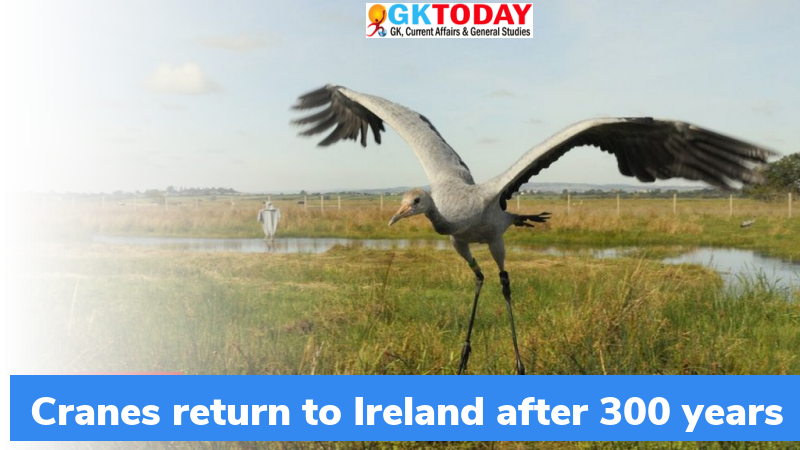Cranes return to Ireland after 300 years
The Cranes that have been a part of Irish folklore (traditional stories and beliefs) were recently spotted in Ireland. The birds were spotted in the country during their breeding season after three hundred years.
About the Cranes
- The Cranes were extinct in Ireland in 1700. This was mainly due to the destruction of their habitats.
- They construct platform nests in shallow water.
- They lay only two eggs at a time.
- They are the world tallest flying birds. They are four feet tall and their wingspan is of seven feet.
- East Asia and South America have the highest crane diversity with eight different species. Australia, Europe and North America have two regularly occurring crane species.
- With the conservation efforts of UK, the region of Gloucestershire, Suffolk, English Fens, Scotland and Wales now have two hundred cranes
- The Cranes are dependent on wetlands and grasslands.
Why is the sighting important?
- A common crane is seen in Ireland during winter. However, it is not seen during the breeding season. When they were spotted in 2020, they did not lay eggs. This is common among cranes as they take two years for successful breeding.
- The cranes take several years to fledge successfully. Fledge is to develop wing feathers that are large enough for a fight.
- For these reasons, spotting is significant.
Cranes in Irish Culture
The Cranes are deeply connected to the history and culture of Ireland. These birds are central to the popular Ireland folklore such as Book of Kells, Fionn MacCumhaill and St Colmcille.
Why did the cranes become extinct in Ireland?
Cranes usually live in Bogs in Ireland. Bogs are spongy wetlands that accumulate peat. Peat is fossil gasoline used for heating the companies and houses in Ireland. These wetlands take hundreds of years to develop. Also, they act as carbon sinks.
For hundreds of years, these wetlands were drained to extract peat. This resulted in the destruction of the habitat.
Month: Current Affairs - May, 2021


